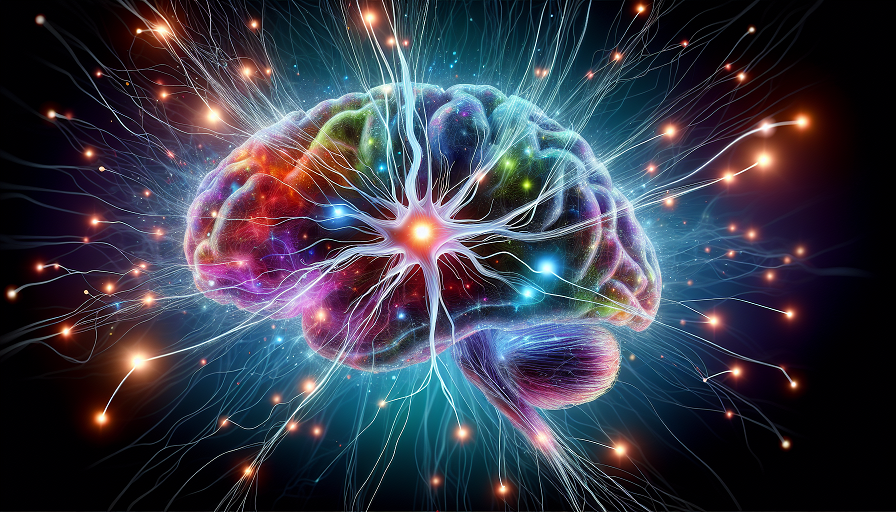
Have you ever wondered how a flat painting can look so lifelike that it seems you could step right into it? This magic trick isn’t just a testament to the artist’s skill—it’s also about what happens inside our brains. Our brains have an extraordinary ability to turn two-dimensional (2D) images into three-dimensional (3D) perceptions. Here we explore how artists create this illusion and uncover the science of perspective that makes it all possible.
Contents
Understanding Perspective: A Painter’s Secret
Perspective in art is a technique used to represent 3D scenes on a 2D surface, like a canvas or a piece of paper. This technique gives depth and volume to flat images, allowing us to perceive them as three-dimensional. But how does this happen?
Artists have mastered the use of perspective by manipulating elements such as lines, angles, and shadows. They align these elements to guide our vision to a vanishing point, a technique that makes objects appear smaller as they get further away. This clever trick of scale and depth is essential in helping our brains interpret the painting’s space as 3D.
The Role of Linear Perspective
One of the most common methods artists use is linear perspective. Imagine train tracks stretching into the distance; they seem to converge at a point on the horizon, even though we know they don’t actually meet. This is similar to what a linear perspective does in art. By drawing parallel lines that seem to meet far in the distance, artists can mimic this real-world experience on canvas.
Linear perspective was famously developed during the Renaissance by artists like Leonardo da Vinci and Filippo Brunelleschi. They discovered that straight lines can manipulate how depth is perceived, making this technique a fundamental principle in the toolbox of any artist who wants to create a believable 3D effect from a flat surface.
Playing with Light and Shadows
Light and shadow also play a crucial role in creating depth. By adding shadows and highlights to a 2D image, artists can simulate the way light interacts with objects in the real world. Shadows can indicate the direction of light and help in defining the volume and position of objects in space.
This interaction between light and objects tells our brain about the texture and contours of the surface. Artists like Rembrandt were experts in the use of chiaroscuro, a technique focused on light and shadow, to enhance the depth and volume of their images, convincing our brain that the painted image has depth and form.
The Brain’s Amazing Interpretation Skills
The process of interpreting 2D images into 3D perceptions involves an intricate dance within our brain. When we look at a painting, our eyes capture light and send this information to our brain. Here, various parts of the brain work together to analyze perspectives, shadows, and sizes, piecing together a three-dimensional understanding from a flat image.
The Role of Visual Cortex
The visual cortex, located at the back of the brain, is primarily responsible for processing visual information. This region is where the magic begins. It decodes basic elements like colors, lines, and shapes, which are then put together into a coherent picture.
The brain doesn’t just stop there—it uses memories and experiences to fill in gaps. It knows that certain patterns and arrangements imply depth, and it uses this knowledge to make educated guesses about what we see.
Depth Cues: The Brain’s Tools
Our brain identifies depth using two main types of cues: monocular and binocular. Monocular cues, which can be seen with one eye, include techniques like linear perspective, size, and texture gradient. For instance, an object that’s smaller and less detailed is usually perceived to be further away.
Binocular cues require both eyes to perceive depth, and they work through something called binocular disparity. Since each eye views an image from a slightly different angle, the brain combines these separate images to create a single 3D perception. This dual vision provides us a complex 3D interpretation of the world that a single perspective might miss.
Practical Examples in Famous Artworks
To see these techniques in action, we can look at famous works of art. Consider Leonardo da Vinci’s “The Last Supper,” where linear perspective is masterfully used. Every line in the room’s structure leads to a vanishing point right at Jesus, focusing attention and creating depth.
In Vincent van Gogh’s “The Night Cafe,” the artist uses shade, color contrasts, and perspective to produce the space’s claustrophobic feel. The exaggerated angles make the room look like it’s closing in on the viewer, showing how even distortion in perspective can have a dramatic effect.
Challenges and Misinterpretations
While our brains are remarkably adept at interpreting depth, they can sometimes be fooled. Optical illusions play off these interpretative shortcuts to create images that are confusing or impossible. These illusions often highlight the assumptions our brain makes, providing insight into how depth perception operates.
For instance, the famous “Ames Room” illusion plays on depth cues, making people appear drastically different in size despite standing in the same room. This occurs because the room is cleverly distorted, and our brains automatically apply familiar rules of perspective where they don’t fully apply.
The Intersection of Art and Neuroscience
The synergy between art and neuroscience reveals fascinating insights into how we view and interpret visual stimuli. Art historians and neuroscientists alike delve into how artistic techniques engage neural pathways, creating the perception of depth and motion on static surfaces. This interdisciplinary study not only enhances our appreciation of art but also informs new creative methodologies that artists might use to further challenge and captivate the human mind.
Exploring Beyond the Canvas: Brain Supplements and Cognitive Enhancement
Interestingly, the discussion about our brain’s interpretation capabilities ties into broader conversations about enhancing cognitive functions. Some researchers are investigating the potential of brain supplements to bolster cognitive abilities, including aspects like memory, focus, and perception. These supplements, often composed of natural ingredients such as omega-3 fatty acids, B vitamins, and herbal extracts like ginkgo biloba, are designed to support overall brain health, possibly enhancing how we process complex visual information, although more scientific research is needed to substantiate these claims.
As our understanding of the brain continues to deepen, the use of these supplements remains a topic of interest, offering a frontier for potential cognitive advancements. Whether you’re an artist pushing the creative envelope or someone seeking to enjoy art to its fullest potential, there’s a shared curiosity about how we can optimize our brain’s innate abilities.
The Future of Visual Perception and Artistic Innovation
Looking ahead, the future of how we engage with art and utilize our brain’s potential is promising. Artists and technologists are at the helm of developing innovative experiences that challenge traditional perceptions, such as immersive installations and augmented reality artworks. These technologies expand the boundaries of how art is experienced, forming new dimensions of interaction between the observer and the observed.
As technology progresses, so does our ability to manipulate and experiment with perspective on a grander scale, opening the door for ever more engaging and interactive art forms. The combination of art, science, and technology not only augments our interpretation and appreciation of art but also triggers reflection on our cognitive processes and capabilities.
For those intrigued by both the cerebral and the creative, these evolving dynamics represent an exciting confluence of fields. Whether one is analyzing the neuroscience behind depth perception or simply enjoying a beautifully crafted piece of art, the intersection offers endless possibilities for discovery and wonder.

